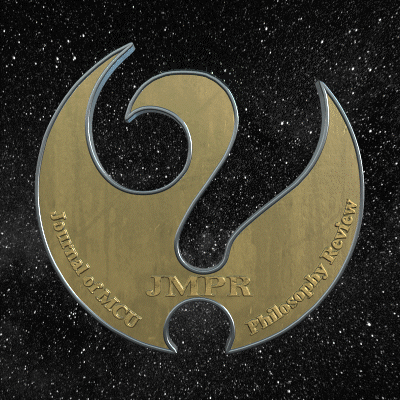Analysis of Establishing the Department of Clergy Case in the Court of Justice Guideline for Monk in Charged of Criminal Case
Main Article Content
Abstract
This research article aims were 1. To study the problems and obstacles in the criminal prosecution of monks. 2. To study the process of establishing the Ecclesiastical Court of Justice in Thailand. 3. To present guidelines for the establishment of the Ecclesiastical Court of Justice in Thailand. Research data was collected by in-depth interviews. Semi-structured questions Key informants were selected in a purposive manner. and organized group discussions to brainstorm opinions of experts from both monks and the general public. The results of the research found that there are problems and obstacles in the criminal prosecution of monks who need to find criminal cases. These include arrests, detentions, prosecutions, sentencing, and enforcement of sentences. Social criticism has a negative effect on the image of Buddhism. The detention of monks who are accused of criminal charges and who are not allowed to be temporarily released. A specific place to stay should be arranged as a special measure. Detention must be separated from laypeople. There should be a Vinayathorn involved in the investigation. The National Office of Buddhism and the Royal Thai Police should review the temporary release pending consideration. There is a process for reinstating the clerical title. The Sangha Supreme Council should review the judicial process of the Sangha. As for the process of establishing an ecclesiastical court of justice in Thailand, it should not be established yet because the volume of cases is not large. Not having sufficient value Establishing a department must consist of two important parts: a budget and personnel. Only one ecclesiastical constitution should be prepared. There are guidelines for monkhood under consideration. That is, there was Vinayathorn involved in the investigation. A place of detention for monks should be arranged, separate from laypeople.
Article Details

This work is licensed under a Creative Commons Attribution-NonCommercial-NoDerivatives 4.0 International License.
บทความที่ได้รับการตีพิมพ์เป็นลิขสิทธิ์ของวารสาร มจร ปรัชญาปริทรรศน์
ข้อความในบทความที่ได้รับการตีพิมพ์ในวารสาร ถือเป็นความรับผิดชอบของผู้เขียนบทความ และข้อคิดเห็นนั้นไม่ถือว่าเป็นทัศนะและความรับผิดชอบของกองบรรณาธิการวารสาร มจร ปรัชญาปริทรรศน์
References
เกษม ประพาน. (2559). การบังคับใช้พระราชบัญญัติคณะสงฆ์ไทย พ.ศ. 2505 (แก้ไขเพิ่มเติม พ.ศ. 2535) เกี่ยวเนื่อง กับกฎหมายฝ่ายบ้านเมือง. (วิทยานิพนธ์รัฐศาสตรมหาบัณฑิต สาขาวิชาการปกครอง). บัณฑิตวิทยาลัย: มหาวิทยาลัยมหามกุฏราชวิทยาลัย.
พจนวรพงษ์. (2550). คำอธิบายกฎหมายอาญา. กรุงเทพมหานคร: เจริญกิจ.
นัดดาภา ภังคานนท์. (2551). ความผิดอาญาของพระสงฆ์ตามกฎหมายเก่า. กรุงเทพมหานคร: มหาวิทยาลัยธรรมศาสตร์.
พระครูวินัยธรสุริยา สุริโย (คงคาไหว). (2564). “ปัญหาทางกฎหมายเกี่ยวกับการสละสมณเพศเนื่องจากการกระทำความผิดอาญา”. วารสารสังคมศาสตร์และมานุษยวิทยาเชิงพุทธ, 6(2), 145-160.
พระครูพิศิษฏ์บุญญากร (ทรัพย์ทวี ธมฺมเตโช). (2565). วิธีการควบคุมตัวพระภิกษุสงฆ์ผู้ถูกกล่าวหาว่ากระทำความผิดทางอาญา. (สารนิพนธ์หลักสูตรปริญญานิติศาสตรมหาบัณฑิต สาขาวิชานิติศาสตร์). บัณฑิตวิทยาลัย: มหาวิทยาลัยมหาจุฬาลงกรณราชวิทยาลัย.
พระเมธีธรรมาภรณ์ (ประยูร ธมฺมจิตฺโต). (2539). การปกครองคณะสงฆ์ไทย. กรุงเทพมหานคร: มูลนิธิพุทธธรรม.
พระมหาตะวัน ตปคุโณ (พิมพ์ทอง). (2562). “ศึกษาแนวทางการใช้มาตรการทางกฎหมาย สำหรับพระภิกษุที่กระทำผิดพระวินัย”. (หลักสูตรปริญญาพุทธศาสตรมหาบัณฑิต). บัณฑิตวิทยาลัย: มหาวิทยาลัยมหาจุฬาลงกรณราชวิทยาลัย.
พระมหารมย์ แตงทรัพย์. (2555). “สิทธิของพระภิกษุทางกฎหมายอาญา”. (วิทยานิพนธ์นิติศาสตรมหาบัณฑิต). บัณฑิตวิทยาลัย: มหาวิทยาลัยสุโขทัยธรรมาธิราช.
พระมหาสัญญา ขนฺติธมโฺม (ตรีสวัสดิ์). (2560). “รูปแบบการปกครองสงฆไทยในอนาคต”. (ดุษฎีนิพนธ์หลักสูตรปริญญาพุทธศาสตรดุษฎีบัณฑิต สาขาวิชาพระพุทธศาสนา). บัณฑิตวิทยาลัย: มหาวิทยาลัยมหาจุฬาลงกรณราชวิทยาลัย.
สนิท ศรีสำแดง. (2543). “นิติกรสงฆ์” กฎหมายที่พระสงฆ์ควรทราบ ฉบับธรรมบรรณาการ. (พิมพ์ครั้งที่ 4). กรุงเทพมหานคร: สำนักพิมพ์บริษัทคอมแพคท์พริ้นท์ จำกัด.


